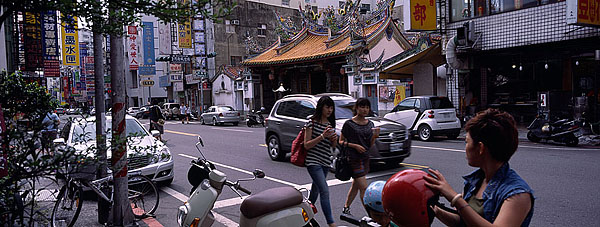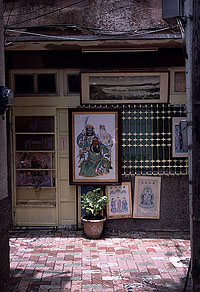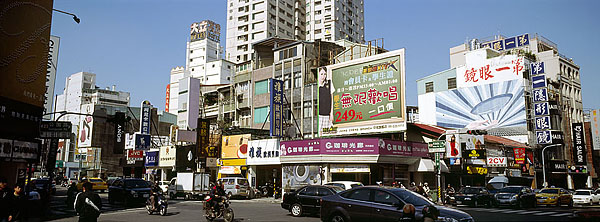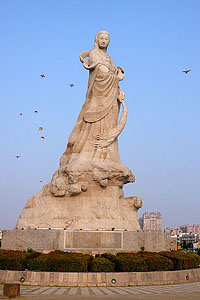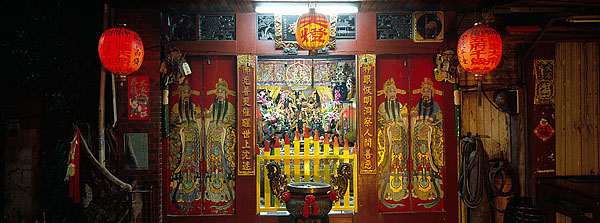http://www.lonelyplanet.com/italy/milan/travel-tips-and-articles/48-hours-in-milan
News flash: Italy was not cryogenically frozen six centuries ago, and Milan is the pulse-quickening proof. After all, visitors flock here not only for La Scala opening nights and Leonardo da Vinci's Last Supper, but also for spring and fall fashion weeks, chic designer showrooms and modern art fairs. Modern Milanese are audacious, industrious daydreamers. So why not jump in and join them in their intoxicating round of pursuits, be that precision shopping, browsing modern art galleries or downing an expertly mixed Negroni.
Day 1: Something old and something new
A morning view of the Duomo
Five hundred years in the making, Milan’s magnificent gothic cathedral sublimely dominates the city’s central piazza. No matter how many times you see it, its pearly white facade of petrified pinnacles elicits a little gasp of awe. Head up to the roof for a heavenly view of its spires and a vertigo-inducing perspective of the piazza with the Galleria Vittorio Emanuele II, Europe’s oldest shopping mall, to your right and the Royal Palace to your left.
Then swap old for new next door in Milan’s modernist showcase, the Museo del Novecento. As you rise up the spiral ramp through 20th-century neo-impressionists, futurists, surrealists and spatialists, you can trace the story of the city through fascism, two World Wars and the dawn of the technological era.
Lunch with the locals
If you’re dazzled by the panoramic floor-to-ceiling views of the Duomo’s statuary from the Museo del Novecento, you can contemplate them further in its art deco bistro, Giacomo Arengario. But you won’t find many Milanese here outside cocktail hour. To lunch with locals wander out into the network of alleys around the Duomo. Traditionalists seeking superlative saffron risotto should head to Peck Italian Bar, the restaurant affiliated to the city’s best delicatessen. Or, if you’re feeling sociable, take a pew at the canteen tables in da Pino and order up bowls of bollito misto (mixed boiled meats).
An afternoon of shopping and aristocrats
Via Montenapoleone, or 'Montenapo', is the most famous street in Milan’s Quadrilatero d’Oro (Golden Quad). Bo Derek must have been thinking of it when she quipped, ‘Whoever said money can’t buy happiness simply didn’t know where to go shopping’. Here, between Gucci, Pucci and Prada, tomorrow’s trendsetters offer a sidewalk scene that makes Milan’s Fashion Week runways seem entirely redundant.
For those immune to the siren song of the shops, retreat to the refined interiors Milan’s house museums (www.casemuseomilano.it): the Renaissance fantasy palace of the Bagatti Valsecchi, the historically-themed apartment of Poldi Pezzoli, and the modernist haute-bourgeoisie home of a sewing-machine tycoon, the Villa Necchi Campiglio.
Evening aperitivo
The early evening tradition of aperitivo is sacred in Milan. Come 6pm, bars all over town bring out platters of crostini, sushi, pasta, focaccia and smoked salmon. The offerings range from simple to exotic as bars compete for critical tastebuds. In the Quad, chic (and expensive) spots include the Piano Bar at the Four Seasons Hotel, the secluded gardens of the Bulgari Hotel, and Martini Bar, a collaboration between Martini and the Dolce & Gabana boys.
The best rooftops terraces are those at the ultra-contemporary Hotel Boscolo (www.boscolohotels.com), Ceresio 7 (www.ceresio7.com) and La Terrazza (www.laterrazzadiviapalestro.com), overlooking the public gardens. But for hipsters and cocktail aficionados the only place to go is Navigli, where rowdy crowds spill out along the city’s canals and Rebelot (www.rebelotdelpont.com) and Bar Rita (Via Angelo Fumagalli 1) mix the best drinks in the city.
A night of culture
Opera and theatre aficionados should make a beeline for La Scala’s gilt-edged palchi (private boxes) or the risky little repertory theatre Piccolo Teatro.
But beyond the grandeur of the historic centre Milanese students and creatives are remaking the image of this bourgeoisie city. Decorated with graffiti, Leoncavallo (www.leoncavallo.org) claims to be Europe’s largest anti-capitalist, creative squat, offering jazz evenings, debates and alternative theatre. Less provocative and colourful, the Fabbrica del Vapore (www.fdvlab.org) puts on avant-garde performances, exhibitions and weekend workshops.
Day 2: Saints, science and the Last Supper
A morning of science and saints
It’s usually da Vinci’s Last Supper or the basilica of Saint Ambrogio that draws visitors away from the Duomo, but Milan’s superlative Science Museum reminds us that Leonardo would rather have been remembered as an engineer instead of a painter. Models of his proto-helicopters, catapults and cannons are displayed here alongside halls devoted to astronomy and horology, and hangars housing steam trains, planes and full-sized galleons.
Afterwards, grab a quick coffee at Biffi or Bar Magenta and toss a coin for your next stop: the golden sky mosaic and mummy of Saint Ambrogio at the eponymous basilica, or Bernardino Luini’s heavenly frescoes in the Chiesa di San Maurizio.
Al fresco lunch in the park
By now you’ll have circled the turreted Sforza castle several times. Behind it, Parco Sempione, the green lung of the city spreads northwards to Napoleon’s ironically named Arch of Peace. The park was originally the hunting grounds of the Sforza dukes before the French mooted the idea of a public park in 1891. It was a resounding success and today Milanese of all ages come to enjoy its winding paths and shady copses. Grab a panino at one of the park bars or head to the bright white cafe of the Triennale Design Museum, which overlooks the greenery.
An alternative afternoon
In front of the castle catch vintage tram #1 and trundle south on its wooden benches to the neighbourhood of Navigli. Here, Milan’s medieval network of canals rise to the surface and are lined with bookshops, boutiques and bars. As the most fashionable Bohemian ‘burb in the city, Navigli is home to thriving community of artists and musicians making this a great place to stroll and shop.
Further west, over the railway tracks near Porta Genova, you’ll find edgier trends along Via Tortona and Via Savona. You may be tempted to stay on into the night in the leafy courtyard of Al Fresco (www.alfrescomilano.it).
The Last Supper
Before you leave, you owe it to yourself to indulge in two last suppers, starting with da Vinci’s Il Cenacolo. Prebook an evening or nighttime tour (www.tickitaly.com) and you’ll be guided through air-locked rooms to the golden glow of the refectory where Christ reveals to gasping disciples that one among them will betray him. So outstandingly good was Leonardo’s composition that it swept away the efforts of even the greatest masters before him, but his choice of oil paint was flawed. With over 80% of the original colour lost and the process of deterioration irreversible this isn’t a masterpiece to miss.
Nor is a Michelin-starred dinner at Il Luogo di Aimo e Nadia (www.aimoenadia.com), where chefs Fabio Pisani and Alessandro Negrini conjure culinary high art from even the simplest ingredients.
Getting around
By bike: The BikeMi (www.bikemi.it) public bike system has stations all over town.
By metro: Milan’s metro (www.atm.it) operates from 6-12.30am; a day ticket costs €4.50.
By taxi: These must be picked up at designated ranks; or call 02 4040 or 02 6969.
By metro: Milan’s metro (www.atm.it) operates from 6-12.30am; a day ticket costs €4.50.
By taxi: These must be picked up at designated ranks; or call 02 4040 or 02 6969.
Read more: http://www.lonelyplanet.com/italy/milan/travel-tips-and-articles/48-hours-in-milan#ixzz3OW6oSsJu














